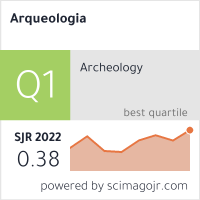The use of satellite images for surveying stone structures in central Western region of Southern Patagonia
Keywords:
Plateaus, Late Holocene, Stone structures, Satellite images
Abstract
Archaeological investigations undertaken in the central Western region of the Santa Cruz Province (Patagonia) highlight the frequency and broad distribution of stone structures known as parapetos. These are located mainly on high plateaus, areas that human populations would have incorporated into their space dynamics during Late Holocene. This paper evaluates the value of satellite images as a methodological tool that allows the remote recognition of stone structures in the Strobel Plateau and the Pampa del Asador-Guitarra Plateau. To this end, BingMaps software –a free satellite image platform– was used. The results obtained to date emphasize the effectiveness of this tool, given that new stone structures assemblages were identified.Downloads
Download data is not yet available.
How to Cite
Dellepiane, J. (1). The use of satellite images for surveying stone structures in central Western region of Southern Patagonia. Arqueología, 24(2), 259-269. https://doi.org/10.34096/arqueologia.t24.n2.5009
Section
Reports
Authors who publish in this journal agree to the following conditions:
- Authors retain copyright and yield to the journal right of first publication with the work registered with attribution license Creative Commons, which allows third parties to use the published always mentioning the authorship of the work and first publication in this magazine.
- Authors can make other independent and additional contractual arrangements for the non-exclusive distribution of the version of the article published in this issue (p. Eg., Inclusion in an institutional repository or publish it in a book), provided that clearly indicate that the work was published for the first time in this magazine.
- It allows and encourages the author / s to publish their work online (eg institutional or personal pages) before and during the process of revision and publication, as it can lead to productive exchanges and greater and more rapid dissemination of work published (See The Effect of Open Access).





(1)13.png)






1.jpg)
1.jpg)


13.png)
1.png)


(1)1.png)









